The bad news is you can’t get a V6 in theToyota RAV4 anymore. Which is a shame, because with that V6 – which you used to be able to get – the RAV4 was maybe one of the top ten sleepers ever.
It looked far more innocent than OJ – but could outrun most V8 muscle cars from the ’60s – while getting you to work when it snowed and getting eight bags of mulch home from Home Depot and getting very little attention from armed government workers and the insurance mafia on the way… even if you were really hauling those bags of mulch!
But Toyota benched the V6 after the last major redesign back in 2013. Not because it wasn’t popular but for reasons of fatwa-compliance.
The V6 was too thirsty – for Uncle.
Since then, the RAV has come only with a 2.5 liter four cylinder engine.
The good news is the latest RAV comes with something else.
Not the V6 – but something good that sets it apart.
And, there may be hope yet for the V6… in a manner of speaking
What It Is
The RAV4 isn’t just another crossover SUV.
Well, yes – it is one of those. But it’s also a historic crossover – being the first one as well as the longest-in-continuous-production one.
It’s as hard to image a world without crossovers as it is a world without smartphones. But before the mid-’90s, there were no crossovers.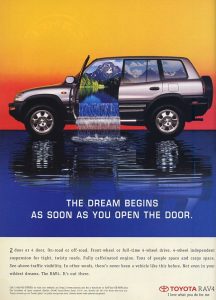
Just cars – and trucks.
The original ’96 RAV4 pretty much created the template that others quickly emulated – because it sold. The RAV was built on a car’s chassis, but rode higher up, like a truck. It was good in winter – and good for carrying cargo – but drove pretty much like a car.
And with the V6, the thing was fast, too.
A star was born.
Today, the RAV4 is the best-selling crossover SUV in the country.
And this coming year it’ll be the first Toyota crossover to offer rock-crawling capability.
There’s a new-for-2020 TRD Off Road package that significantly upgrades the Billy Goat Quotient of Toyota’s hugely popular crossover.
It features a torque vectoring AWD system that can route engine power to individual wheels and side to side – not just from front to back.
And all AWD-equipped RAV4s get this upgraded system – not just the TRD.
But TRD equipped RAVs get some other stuff, including additional ground clearance (8.6 inches vs. 8.4 for all the other trims) and more towing grunt, too.
This gives Toyota buyers the extra measure capability they previously had to shop Subaru or Jeep to get.
Toyota wants those sales, too!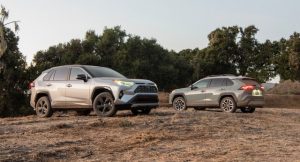
Prices start at $25,850 for the base LE trim with front-wheel-drive. Adding the torque-vectoring AWD system bumps the price up to $27,250.
The new TRD Off Road version – which comes standard with AWD – will sticker for $35,810.
A top-of-the-line Limited lists for $34,380 with FWD; with AWD the tab rises to $35,780.
There’s an in-between XLE trim – available with or without AWD – that comes standard with more amenities than the base LE but without as many amenities as the top-of-the-line Limited.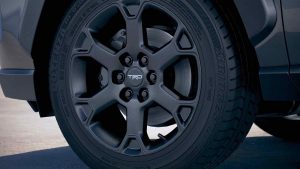
Toyota also offers an Adventure trim that comes with some of the TRD’s additional capabilities – including the same torque-vectoring AWD system, contrast-color plastic fender flares, higher (3,500 lb.) tow rating and a unique-to-this model roof rack system – but with a suspension (and tires) tuned for on-road driving.
It stickers for $32,995.
What’s New
The RAV4 gets a major redesign – and will get new capability. Including Android Auto, AppleCarPlay and Alexa capability.
You can also now buy the Weather package – which includes heated windshield wipers – without having to buy AWD.
Sirius/XM is also standard in all trims now.
What’s Good
Notched-up capability vs. same-size rivals like the Honda CR-V.
More power than comparably off-road capable rivals like the Subaru Crosstrek.
Roomier than the Jeep Compass Trailhawk.
What’s Not So Good
Subaru Crosstrek comes standard with torque-vectoring AWD (and a manual transmission) for just $21,895.
Jeep Compass Trailhawk one-ups the TRD with a Low range gear reduction feature that makes it almost as rock-crawl-capable as a truck-based 4×4 SUV.
Toyota says only the TRD and Adventure trims can pull 3,500 lbs.
Toyota offers the RAV in many trims but with just one engine. And just one one transmission.
The only engine available is a 2.5 liter four – which is the same basic engine that’s the standard engine in the current Camry sedan.
On the upside, it’s a powerful engine.
You get 203 horsepower – without a turbocharger. Which is becoming hard to find in almost any vehicle – crossover or otherwise – as the car companies put smaller and smaller engines in their vehicles, to get Uncle off their backs – and bolt turbos to them to keep the power levels of these downsized engines at a level buyers will accept.
Unfortunately, buyers can’t get the Camry’s V6 in the RAV anymore – which they used to be able to.
Still, the RAV4 comes with more engine than rivals like the Honda CR-V, which comes only with a 1.5 liter turbocharged four that makes 190 hp – and the Jeep Compass, which comes only with a 2.4 liter four (without a turbo) that makes 180.
Diversity may be our strength but you won’t find much under the hood anymore – of almost any new car.
Engine options are being winnowed down to one take-it-or-leave-it “option” in most new cars, chiefly because the previously optional larger/stronger engines use too much gas – for Uncle – and because larger engines “emit” more carbon dioxide, the “emission” that has nothing to do with air quality but everything to do with ginning up a political pretext to kill off the internal combustion engine.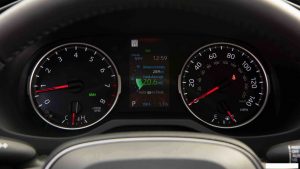
There’s not much diversity when it comes to transmissions, either.
The RAV comes only with a continuously variable (CVT) automatic transmission – another homogenizing trend you’ve probably noticed. CVTs are becoming as hard to avoid as turbocharged and downsized engines – for the same reasons. A CVT ekes out a small MPG advantage vs. a manual or conventional automatic with fixed forward gears (rather than continuously variable ratios).
Here’s where you may want to have a look at the Crosstrek – which is the only crossover in the class that still offers a manual. But you’ll have to make do with a lot less power. The Soobie’s standard (and only available) 2.0 liter engine makes just 152 hp.
It could use a turbo.
The chief appeal of crossovers vs. SUVs is that they don’t drive like SUVs but can do many of the things SUVs can – like venture out of the garage when there’s a few inches of snow on the ground and the plows haven’t gotten to your neighborhood yet.
The chief appeal of the new RAV4 vs. other crossovers is that it’s capable of handling more than just a little snow – when ordered with the TRD upgrades.
Or even not.
Any RAV ordered with AWD gets the same torque-vectoring AWD system that’s the centerpiece of the TRD RAV. It has driver-selectable Rock & Dirt, Mud & Sand, Snow and Sport modes – as well as Eco and Normal.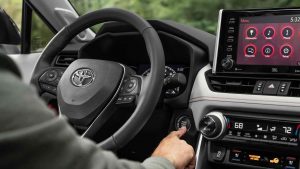
The TRD ups the ante with 8.6 inches of ground clearance and a set of knobby-tread Falken Wildpeak all-terrain tires.
The only thing missing for off-roading is a low-speed crawl mode (the Jeep Compass Trailhawk is the only vehicle in the class that has this) but even without it, this RAV4 is the most capable RAV4 to date – and much more so than its primary rival, the Honda CR-V.
It’s also competently quick.
It can get to 60 in about 7.5 seconds, which for perspective is several seconds quicker to 60 than the under-engined Subaru Crosstrek (which gets there, eventually, after 10.3 seconds).
Toyota – like Forrest Gump – did the best it could with what it’s got.
The fact is the new RAV’s acceleration is only about 1.5 seconds off the pace of the old V6-powered RAV and the fact that Toyota managed this with just 2.5 liters (vs. 3.5) and without a turbo is pat-on-the-back worthy.
The powerful engine also nixes the usual problem with CVT automatics – which is their tendency to call your attention to the lack of power by stringing out the engine to redline or near there every time you attempt more than tepid acceleration. The RAV just accelerates – smoothly and quietly.
It also corners better than most people are willing to risk trying. At the same speed that would have my ’76 Trans-Am’s tail greasing around the asphalt, me having to countersteer (and throttle steer) to keep it going in the wanted direction while going more and more sideways, the RAV’s tires just squeal a little bit.
This is something.
My Trans-Am is a high-performance muscle car and was – in its time – the best handling American car you could buy.
Today, you can buy a crossover SUV that handles better.
At The Curb
It’s blandly styled, but the RAV’s beauty lies beneath its skin. The interior is very thoughtfully designed, with several storage shelves for the driver and passenger as well as a large (and deep) storage bin in the center console.
Hand-sized rotary knobs control the essential functions (cabin temperature settings, radio volume and station) rather than feedback-free touchscreen buttons.
It’s one of those increasingly rare new vehicles that you can just get in and drive – without having to read a manual first.
Or take your eyes off the road.
The RAV may not have low range gearing, but it can pull more – and it has more cargo room – than the Jeep Compass: 37.6 cubic feet behind the back seat and 69.8 cubic feet with the back seats folded – vs. 27.2 cubic feet behind the back seats in the Compass – and 59.8 cubic feet with the Jeep’s back seats folded.
It’s also much roomier – for people and cargo – than the smaller Crosstrek, which only has 55.3 total cubic feet of cargo capacity (20.8 behind the back seats).
The same-sized CR-V has more cargo room – 75.8 cubic feet with the second row down – and a much roomier second row, with 40.4 inches of legroom vs. 37.8 in the Toyota – but you can’t get the extra capability in the Honda.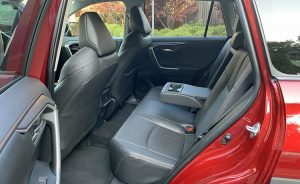
What Toyota has done is wedge the RAV into a new sweet spot.
It is still technically a “compact” but if you compare specs you’ll see it’s just a few inches shy, in terms of overall length and wheelbase, of being actually mid-sized.
The same goes for the Honda CR-V.
But the RAV offers the extra capability you’d otherwise have to downsize a bit – both under the hood and otherwise – to get, in something like the still-actually-compact Crosstrek and Jeep Compass.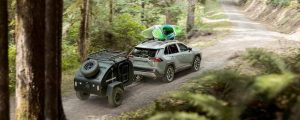
Smart stuff, that.
The Rest
I will probably get in trouble for typing this but here goes:
While Toyota says that only the TRD Off Road (and Adventure) versions of the RAV can pull 3,500 lbs. this is likely a marketing upsell since all RAVs have the same engine, transmission and frame.
I can see no mechanical/functional reason why any RAV shouldn’t be able to pull the 3,500 lbs. Toyota says only the TRD and Adventure RAVs can handle. Toyota says other RAVs can only pull 1,500 lbs.
Toyota is one of the first major car companies to put Alexa in its vehicles. In addition to the new RAV4, you can also get it in the Camry and Sienna minivan.
Whether you want to get it is another matter.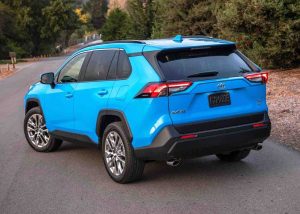
Alexa can be handy but is also arguably creepy. Bad enough that Big Brother comes along for the ride. With Alexa, you’ve got Jeff Bezos along for the ride, too.
The good news is Alexa’s optional.
For the moment.
One more thing – a really good thing, too: A hybrid version of the RAV4 will be available soon that will get to 60 sooner than the old V6 RAV did. While getting better gas mileage – and most important of all, without being an EV.
More in a few months!
The Bottom Line
The RAV may have started it, but with so many others vying for the same turf it was time to grab some new turf.
And that’s just what the new RAV does.
. . .
Got a question about cars, Libertarian politics – or anything else? Click on the “ask Eric” link and send ’em in!
If you like what you’ve found here please consider supporting EPautos.
We depend on you to keep the wheels turning!
Our donate button is here.
If you prefer not to use PayPal, our mailing address is:
EPautos
721 Hummingbird Lane SE
Copper Hill, VA 24079
PS: Get an EPautos magnet (pictured below) in return for a $20 or more one-time donation or a $10 or more monthly recurring donation. (Please be sure to tell us you want a sticker – and also, provide an address, so we know where to mail the thing!)
My latest eBook is also available for your favorite price – free! Click here. If that fails, email me and I will send you a copy directly!


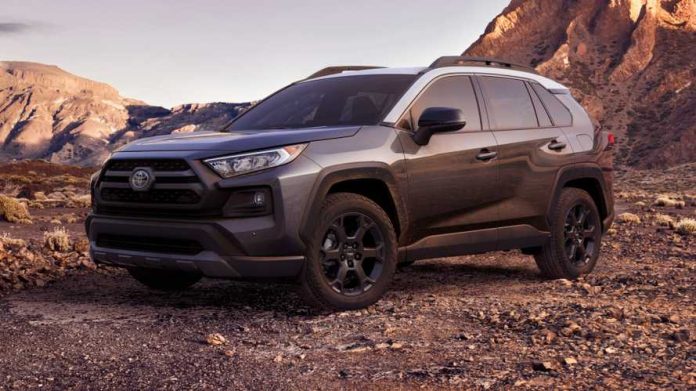


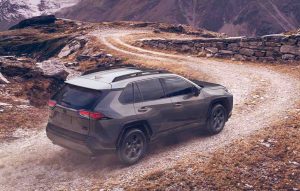





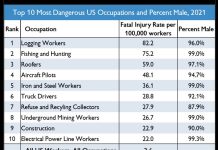


Toyota says the 2020 RAV4’s have an 8 speed automatic transmission. You’re saying it’s a CVT and a lot of the discussion here is centering around CVT’s. What’s up with that? I’m looking for a 3500 lb towing capacity and good daily driver mileage. I won’t buy a CVT to do that. Any recommendations?
I’m curious about the tow rating discrepancy and if there’s more to it than marketing hype for the different versions. Maybe additional cooling capacity including a trans cooler? I have a 2012 four cylinder Rav rated for 1500 lbs. I may be tempted to tow more if I knew.
The best comparison to a Subaru is the Forrester rather than the Crosstrek – much more apples to apples.
CVT is a deal breaker for me; otherwise it looks pretty good. It’s getting harder and harder to find new cars that I’d be interested in.
In 2012 an optional Tow Prep Package was available on the RAV4. It consisted of “Upgraded Radiator, Fan Coupling, and Alternator”, at the bargain price of $160. With the tow package, and V6 engine, the towing capacity is 3,500 lbs, with the 4-cylinder it’s 2,000 lbs.
Last weekend I did a little dirt road travel with my Cherokee Trailhawk. Nothing strenuous, but a lot of washboard. Compared to every solid rear axle truck I’ve driven it was almost luxurious. I know that it’s not ever going to pull a 5th wheel, but not having the back end get away on gravel and dirt is worth the loss.
As for a CVT, I’ve always though they were a good idea. Run the engine at the sweet spot all the time and let the transmission do the rest. I guess it could be disturbing though and probably a lot noisier.
I’m just concerned that the CV axles in IRS won’t last long in mud, like our county road gets. The girls had a Legacy wagon AWD to drive to HS and the rear axles promptly failed. But OTOH I’m pretty sure the boots were compromised when we bought it from the dealer, supposedly triple digit point inspected and sold us a service plan that didn’t cover the axles because the boots were open. I don’t suppose the axles EVER fail unless the boots break either from damage or just deterioration.
Even the IFS CV axles such as in full size pickups and all FWD are vulnerable but maybe not so much as the rear that gets more stuff thrown up at it. I recently replaced the front axles at over 200K but I don’t know if they were original. Right now I can look out there and see frozen mud sitting on top of the lower control arms of my pickup so I’m not filled with confidence. But the replacements were only $75 each and the flanges are notched so they go in and out easily, unlike the ones I took out. I spent all day on each side and now I wish I had just gotten a torch and cut the old axles in half to get them out.
Of course the vast majority of folks will never drive on roads such as we have to just to go anywhere, unless they are just out screwing around on a weekend.
I have a replacement set of boots I got at auction but never had to use them on my 93 4WD one ton Turbo Diesel. It’s been though a lot of bad pasture. OTOH, my Nissan shucked it’s jive IRS from ruined boots early on.
Don’t see how you would replace the boots without taking apart and rebuilding the axle ????? I’ve looked through the procedure for that and it doesn’t seem worth it to save $75 less the separate new parts. One ton axle probably costs a lot more though. I wouldn’t put my old axles back in for a million dollars even if I rebuilt them although I could probably just cut down or grind off the inner flanges just like the replacements were. I was about to just whack them and then when I got the new one out of the box I saw that I really should have! GM apparently intends for you to remove the entire front end just to change an axle.
It’s possible the axles I took off were factory so I guess that’s not too bad for 200K+ miles on a pickup that appears to have been treated like crap for its entire life. I still don’t put much trust in the CV axles on these various little SUVs for the condition that we have to up with put.
It was a GM dealer where I bought a “lot” of parts and those were in it. If you see a cut boot you can beat the boogey man and replace it but it’s a hell of a lot of work. If I had to break it down to that point I be putting new everything on the A arms at 200K miles. All of that stuff is getting close at that point if you use one like I do. Then you’re good to go for another couple hundred thou….or more, depending on what brand parts you use. I have never found parts that were better than GM but they probably exist these days. Never had a CV or U joint last as long as the GM. I can’t blame the driveshafts I’ve ruined. When I next rebuild that 3500 I’m going to build some protection for the rear driveshaft. It won’t be like factory stuff. I build stuff that’s hard to tear up. It won’t be an 1/8″ steel plate, it’ll be 1/4″(so, who cares about that small amount of weight?). Another thing I’ll do is double box the front frame and box the rear. The frame itself is huge so I won’t worry about the rest of it.
If the axle flange is cut flat between the bolt holes forming a sort of rounded hexagon, then you can slide the axle right out/in through the “window” in the LCA. So all you have to do is take off the big hub nut and the six flange bolts, and jack up and take off the wheel of course.
I found that you have to block up the frame and let down the control arms to get the flange started through, and then jack up the control arms again to get the outer flange/shaft out of the hub assembly. Small task compared to taking out ball joints, etc. Of course if all that stuff needs to be replaced, you might as well do it all at once, but I’m not putting that much into a Lone Ranger pickup that maybe gets driven 1000 miles a year at most.
Lone Ranger pickup: goes to the dump, to the dump, to the dump-dump-dump!
It already had a bit of jiggle on the bottom passenger ball joint. The rest can’t be too far behind so I’ll just replace everything while it’s a bare frame. Easily(well, almost)done at that point. She’ll drive and ride like a new one. The only think better would be the “Cash” method of getting the parts….but then again, I’m not sure I could live with one headlight on one side and two on the other.
I just couldn’t see putting $2500 parts/labor into an $800 pickup.
I don’t have a flat place to keep it out of the weather for that big of a project. If the weather is good enough to work on it, then I need to use it around the place.
Hi Anon,
It depends… book value and actual value can vary wildly. My ’02 truck – in “good” shape – has a book value around $3,500. If it had a dead engine, it would probably be worth about half that. But it would be well worth it – to me – to spend $1,500 on it, to put a new engine it, because the rest of the truck is in very good shape and with that new engine, the thing would likely be fine for another ten years or more before something else expensive had to be repaired or replaced.
eric, I recently found another 93 Chevy pickup that was a clone of mine. It was low mileage and had a lot of new parts including wheels and tires and lots of other parts.
It was “like new” and they wanted $28K for it. It’s worth it although it’s hard to get comprehensive insurance for an older vehicle.
Would it be worth that to me? Yes, if I could afford it.
It would be better than maybe $60K for the POS that they are making now.
Ain’t THAT the truth, Anon!
I’m still amazed at what good stuff is going for though. I used to think “Nobody’s buying these things for those prices”- but they are!
I always check this classified specialty site for old flat-fender Dodge Power Wagons and older Dodge pick-ups (30’s-80’s).
The prices are insane. Yet the good stuff is taken down and put in the “sold” section quite briskly. I was looking one day at an ad on there (purely for entertainment) and saw that the guy selling it was an old e-friend of mine whom I had lost touch with. So I shot him an email just to see how he was doing. Turns out, the truck he put on there was sold within 4 hours of him putting it on there…for $36K.
And too, Eric, you’d never find a truck like yours in truly GOOD condition, with reasonable mileage, for anywhere near $3500- if you could find one at all- ’cause it seems that these days, someone’s relative, friend or neighbor snaps up anything that’s truly good, and often even paying a hefty price for it; what ever is left over for Craigslist, either isn’t so good….or is priced at at least 4x “book”.
It’s like my ’99 F250. Everything I know tells me I should just sell it and get another, rather than messing with the [non-structural, outer-body][rust, and paint and clear coat, and little odds and ends- but the thing is, ya can’t find ANYTHING like it, not even for good money. I test drove one that someone was selling on CL for $10K (just to see) and it was a POS compared to mine- it just looked better.
I’ve been keeping my eye out for YEARS; there’s nothing out there. Thought I saw something T’other day for a little under $10K- Turns out it had 465K miles on it and a rebuilt title. (That’s all I’ve been driving for the last 20+ years, are rebuilts…but I sure as hell ain’t paying top dollar for one; and with absurd mileage, no less!)
I think we’re at the point where it’s just “Keep what ya got no matter what”. They’re killing off our ability to get good older vehicles faster that I had imagined.
It’s a firewood and trash hauling pickup. It looks like crap and I don’t care much if I scratch it up. I actually want to find a better specimen and do whatever it needs to make it mechanically brand new. This one isn’t worth it.
I did put an upper ball joint on the left. It would have only taken a couple hours except I found that I had to borrow a big wrench; a crescent wouldn’t turn the castle nut in the tight space.
HAHAha! I swear, I could have posted those exact words on here a few years ago! Same upper left…borrowed wrench and all!
And borrowing a wrench or anything else takes hours and days ’cause you have to catch up on all the talking with your neighbor 😉
PS: the above is the thing that makes me think about a Wrangler or Gladiator …
I used to operate one of these http://www.cmeco.com/wp-content/gallery/cme-750x/cme_750x_mud.jpg daily on sites that resemble the one pictured. We had an old beater ’77 F150 for hauling water & materials out to the rig, it never saw any on road use, would just load it on the trailer in front of the drill rig.
One job our client in his (‘shiny high-tech’) 4wd was giving us a hard time about that old Ford being a POS when he managed to get stuck trying to drive out to the drill site.
My helper drove past him several times (hauling water & such), then drives 3 circles around his stuck truck before offering to pull him out, LMAO.
A CVT in a supposedly “off-road capable” crossover? Eww! As if FWD isn’t bad enough! Gee, why not just make it one wheel drive while they’re at it? lol I mean, who cares if it’s less capable than a Huffy BMX bike? As long as it has a 50″ touch screen in the center console, the sheep will eat it up.
That’s what I’m thinking – A CVT traditionally has problems with transferring torque because the sheaves & belt are only connected via friction. So if you need more torque than it can supply (even if it’s available from the engine) it slips and you aren’t going anywhere.
Also – I sat in a RAV4 at the auto show last week. If you’re tall, and ride in the passenger seat, skip the sunroof. The seat on that side isn’t powered and doesn’t go down far enough to give you the headroom you want.
This time last year, I spent my first few months of retirement visiting the new car, franchise, compact SUV vendors. Since we own an older Prius with many miles and NO aberrant maintenance, the RAV was at the top of my list. After driving it, the Mazda, Subaru, etc., I settled on a base model Kia Sportage. With a non-turbo four, normal tranny, 10 year warranty, no useless electronic gadgetry, AND a design without a lot of flutes and swirls, the Kia appealed to my conservative nature.
Eric, thanks for the best evaluation of the RAV4 V6 – ever.
When I first test drove one in 2012 I blurted out to the salesman – this drives like a sports car. And so began my purchase of two of them – one for driving and one for a spare, both with 4WD.
I daily tick of Ricers and performance-vehicle folks with “… one of the top ten sleepers ever.”
Heard on the street – 2021 RAV4 hybrid will have 302hp, 0-60, 5.8.
Thanks, liberty!
Yup – in re the hybrid; I should have mentioned something about it. I dig Toyota – note that they have not embraced the EV tar baby. Same goes for Honda.
If you’re willing to spend 35k+ on a TRD RAV4, Honda will give you a Passport AWD Sport with a honkin’ V6 (the glorious J35) for the same price.
Or better yet, spend a couple thousand more and get a real body-on-frame 4Runner instead.
For the me and 99.99% of people that are pavement warriors? No thanks. Passport > 4Runner in every aspect for the 99.99%. It is comical how many people drive Wranglers and other “off road” credentialed vehicles and their underbodies are cleaner than most high-end sports cars.
I had the pleasure of taking the Passport out on an extended test drive and I couldn’t believe how well it handled and accelerated. If I did what I did in the Passport in a 4Runner, the 4Runner would have flipped and rolled right into someone’s yard. The Passport is the first SUV I’m actually considering. I’m sure the 4Runner is great offroad (I’ve seen the vids) but If I want to go offroad, I wouldn’t spend 50k on an offroad capable vehicle to get it junked up….I’d get a 10-15 year old Jeep Wrangler for that.
I must be special because I am the 0.01% hah!
I can’t imagine deliberately going “mud bogging” though … I have the county road for that!
Make that 0.02%!
Even when I was a kid, I’d look at them off-road magazines with the jacked-up trucks with 48″ tires that still had only 9″ of ground clearance, and were owned by guys with full-grown bodies but kindergarden IQs, gunking-up their expensive machinery with rust-causing gear-eating mud and water, and think “What a bunch of ‘tards! How can they do that to their own vehicles?!”.
Me? If I can get up my driveway or down the unplowed road when it snows; not spin my tires, so as not to make ruts in the grass; and do little tasks, like pull my tractor out of a sinkhole….and then be good to go grocery-getting, I’m good.
I wouldn’t treat my 20 year-old trucks the way those magazine jerks treated their late-model toys. Methinks Ford , Chevy and Toyota musta been paying those guys…’cause they weren’t bright enough to be capable of earning enough money to be able to blow thousands of dollars on a weekend jaunt through a big mud puddle. That crap sure didn’t look like “fun” to me.
“torque vectoring” – is that just glorified ABS that senses and locks up any wheel that tries to spin? Still, I guess if it works it works, just a few cents worth of circuits and logic to replace locking differentials.
I can’t imagine that CVT would hold up long at all with much “rock crawling” without a low range.
You’re braver than I am! I would imagine that the RAV or any of these SUV thingies would tip before the tires break loose. In all these accident videos online, they roll over like a beachball at the slightest bump from the side.
Hi Anon,
I wish I could “get away” with posting videos of my… test drives…
Maybe that would be good for a paid members only section to the site. Those got damned saaaaaaaaaaaaafety buzzers. Ding Ding. `
Hi Swamp,
Everyone knows this stuff happens – juts don’t get caught doing it!
Notice this post, bicyclists.
This electronical BS is nowhere near as good as a locker. The electronical crap works by STOPPING one wheel (even if only very briefly) while applying power to another. The locker has positive power applied to both wheels on the respective axle….always.
Some vids on Youtube pitting old 4×4’s from the 70’s vs. this new electronical stuff. The old mechanical stuff always blasted through while the new stuff’d get stuck and then need to be pulled out by the old junkers.
Oh…and nothing beats a mechanical linkage to work the transfer case and hubs….they always work. All this electrically-controlled stuff in the newer vehilces? Pffftttt! It works, till one day it suddenly doesn’t when you go to use it…..right when you need it, without warning, and then you’re SOL.
“This electronical BS is nowhere near as good as a locker.”
And a cheap locker is no good.
S10 with G80 in snow. Spins one wheel into a nice deepening hole until the locker kicks in. Then the first wheel holds everything stationary while the other wheel digs a hole.
Too be fair it does generally work OK otherwise.
Maybe someone forgot to use hypoid gear erl? Meh…GM….
centrifugal engage. needs to slip before it will lock.
I would hardly call a G80 a locker…but they are cheap (junk).
G80 code was typically an auburn (non rebuildable cone style) or a ‘gov bomb’ (centrifugal).
dirtybob, you got it. A G 80 was an iffy thing if it did work and none worked for long. Cone style means “No, it’s an open diff”. BTDT.
The whole concept of letting one wheel spin up and then locking it to the other stationary wheel at speed always seemed a bit of an engineering…. “Really? Are you sure about that?”
The first time it ever engaged on the new to me but very used vehicle, the bang had me sure something must have broken. Fine years later though.
yep, and they have a reputation of grenading under shock loads – thus the ‘gov bomb’ moniker.
most of the factory installed gm & ford limited slip units suck…with the ford stuff being the (slightly) better ‘junk’.
some (few) gm cars got helical gear (torsen) differentials that I am unfamiliar with (durability wise). I’m not well versed enough in fords to know all the factory options but the trac-lok diffs like to eat clutches (short life span between rebuilds).
none of the above are lockers.
look to aftermarket parts for the win.
***””None of these are lockers”****
Exactly! Limited-slip differentials and other various schemes to achieve the same thing, are completely different from a locking differential.
I could never tell the difference between a limited-slip and nothing at all.
And now, these various Rube Goldberg configurations that accomplish AWD or 4×4 on these unibody things with transversal engines and transaxles instead of a real rear in the front, these things are like something cobbled together by an inventive 12 year-old held together with baling wire and chewing gum….only much more expensive to buy and repair- but which don’t offer 10% of the performance or durability of the simple durable machinery ‘Mercans used to make.
using a yukon posi in the roadmaster (4 series eaton clone). not a locker but it’s tight enough to scrub the tires when turning (400# springs). 3 yrs, plenty of abuse (dragstrip & daily), no issues yet. did take a while (week or two) for the clutches to quiet down. outperforms any factory posi I have ever used, not once has it tried to do the 1 wheel peel.
will see how long the clutches last.
it’s basically a beefed up version of what they used to run in the factory BBC cars…
I have never worn out a GM P trac unit. Then again, ever so often I would pull out a little lube and add a bottle of their special lube to rejuvenate the units. Must work well. For a mainly street used vehicle I like Ptrac.
Of course the larger the vehicle the more abuse you’re going to deal it.
I’ve worn out several, and not by being nice to them. Factory ford units and fresh auburns only last me about 1 year before becoming sloppy.
The special additive is a friction modifier to keep the clutches from chattering, lot of guys will run without the additive in order to restore lost performance (a worn posi has a lower breakaway torque). I’ve been using the redline synthetic with the additive already mixed in on the yukon diff.
A worn posi seems to work ok offroad in most cases but they aren’t worth a damn at the dragstrip…
I usually use a locker or spool but decided to give the yukon a try this time. Because I also needed a carrier (went from 2.54 to 3.42 gears), the total cost was comparable to one of those cheap lunchbox lockers.
For whatever reason, Ford has never made a TracLoc worth a damn. They finally got their shit together and just put a electric locker on the new pickups. I like the idea of being able to turn it off for street driving.
I got rid of the electric front axle engagement in my “new” 1989 K1500.
There are manual cable kits available, but I just stuck a short piece of PVC pipe on the end of the Donkey Dick and bolted it back in, so everything turns all the time just like you had the front hubs locked in on an older 4×4, or for that matter just like my 88 Jeep that has neither lock out hubs nor axle disconnect from the factory – duh!
My pickup does have manual transfer case lever. In fact I saw a nearly new 2500 Silverado “work truck” owned by the county that has a manual transfer case lever, so they are not extinct. Not sure how they do the late model front axles; they probably still have some POS up there that needs to be jury-rigged so that it always works.
I just have manual locking hubs on my Fords. Just wish I had a manual transfer case… (and a manual tranny for that matter!)
I never had any problems on my Chevy 3500 with the front locking via the lever for the transfer case even though it’s electrical.
I just wish I had a couple OD’s. I get to 2500 rpm and I automatically try to grab another gear. Since OD is up and to the right, I don’t even think about that being the last hole and get it into neutral with no place to go before I remember. While I have the body off I’m going to do some looking and measuring to see if I have room for a Brown-Lipe 2 speed or 3 speed unit.
The 3500 could have a different system than the 1500, which has a position sensor switch on the TC lever to actuate front axle connection. Mine didn’t have working 4wd when I bought it so it helped to get it cheap (not to mention non-existent rear brakes hemorrhaging fluid).
I could have spent ~$150 for a new OE actuator (I did check that it was getting power) but I read so much about them not working in cold weather. Not much good to have “four wheel drive” when it doesn’t work when you’re in deep snow //roll eyes. So I “fixed” it permanently for about $0.05 worth of plastic pipe and a little work. Works good enough for a “farm truck” that only goes to town a few times a year. I did pull the 4wd fuse just in case the actuator decided pull a Lazarus on me. I think I’ve been driving long enough to know when I’m in 4wd without an idiot light on the dash 😉
My 3500 was pristine, inside and out and I worked hell out of it. The Edelbrock IAS Performer shocks were the best of the best. Smooth rolling down the road and instantly stiffen with the slightest move and would even keep it from leaning in curves. People who didn’t know me always asked if that was the original interior. I installed a 12V plug bar on it and had a 400 watt inverter. I could run down the road and watch a 21 inch monitor(I didn’t, but could have), a bigass desktop computer in the rear under the seat plus a printer.
I carried two pair of boots. One for the dump and the other for clients. It had a dammit jack locked into the side rail behind the headache rack and a floor jack under the crossover box. I could haul 2 tons of 33′ steel on the headache rack and the bar over the endgate. It was a choice to not have a 120 gallon nurse tank behind the tool box. It was nice to have but a pain when carrying decking or plywood. I have the first pickup ever that doesn’t have an 8′ bed. I hate it.
The wife bitched about it being so long so I encouraged her to not drive it. The day I had to drive 35 miles to push the clutch pedal to the floor(It won’t start), I made my displeasure known. WTF wasn’t she driving her Cutlass Supreme SL, a really nice car? She’s left me several times with every vehicle running on fumes and then chooses the one I’ve been driving since it’s fueled up.
I had no choice one day but to take the El Camino which was empty with a 27 gallon tank. There are multiple things about that that pisses me off. Running out of fuel a mile from the nearest town left me hoofing it to a house, borrowing their phone and calling the guy who owned a fuel distributorship to bring me fuel. He had no small can so he picked me up and I got to buy another new gas can, something “I” didn’t need since I had a half dozen Jerry cans plus all the ones with different mixes of 2 cycle fuel and a couple other 5 and 6 gallon cans I used on the small engines, such as the welder I mostly fueled at the pump since it was a 20 gallon tank.
I don’t get it. All these crossdressers and little SUVs weigh more than the station wagons and original “SUVs (first gen. Bronco etc.) of old; cost proportionally much more; and yet have only a fraction of the carrying capacity/space.
What exactly is the point?
And a CVT in an “off-road”[ha-ha] vehicle…. uhyeahhh……
Actuallyas far as CVT goes, they work extremely will in my Kawasaki Mule and snowmobiles…
Oh yeah … I remember carrying spare drive belts and having one burn up in five seconds if someone got stuck or didn’t use enough throttle.
Well, DON’T DO THAT! Everybody has lost a belt occasionally- it’s a wear and maintenance item. Unfortunately CVT’s in (modern) cars don’t use them, they use much less maintainable technology- usually throw away. But they still do a great job in a lightweight machine of keeping you in the optimum part of the powerband.
The key word being lightweight machine.
I had a scooter with a CVT. Couldn’t stand the lag. Felt like the throttle wasn’t actually connected to the carb. I eventually put different weights in the variator- but it still wasn’t the same.
Heck, a regular automatic is bad enough, as far as what ya lose without that direct mecca-nickle connection…..
Yeah, the setup is tricky, but it can be tuned to taste (more lag, less lag, location on the powerband). I’ve always liked the concept- and in most of the stuff I’ve had with them you don’t finesse the throttle anyway- on a snowmobile you pretty much mash it and listen to the 2 stroke go through the revs to 7 grand or so. On the Mule you are so low geared you’re limited to about 30 mph but it comes in smoothly and gives great control on mud, rocks, every terrain I’ve tried. I’ve towed 2 ton trucks with the old 450 Mule. It just does everything I’ve ever asked it to do.
Nunz, a friend had a scooter that was pitiful so his dad comes up with a Cushman Silver Eagle with the 2 speed transmission and lots more power. Now that thing was fun. BTW, did you get my recipes? If not, check your spam.
Musta been reading your mind, 8! I literally just replied to your email! (Got it a few days ago) Sorry for taking so long to get back to you- I really appreciate the recipes!
Heh, that Cushman tranny sounds sweet!
Overall, an appealing package. Toyota has taken the art of acceptable compromise to new heights. If I were looking to buy, the RAV TRD would be on my short list, even without any V-6 option ….except…………..
I’ll NEVER buy a vehicle with CVT! There’s No Compromising on that.
Hi Mike,
I tilt your way on the CVT thing – but I am being straight with you guys about the Toyota’s being unobjectionable. I wold rather a conventional automatic. But I much prefer the lack of a turbo – as I expect that will be the cause of more long-haul trouble than the CVT!
CVT’s aren’t that bad. They work wonders for go karts and mini bikes.
LOL. Go Karts and Mini Bikes are not designed to haul a 3500 lb air bag equipped contraption with side impact “protection” down a highway at 80 mph. GoKarts and minibikes are loud enough to drown out the awful sound coming from a belt driven transmission.
Early CVTs, which permitted one to drive as fast in reverse as forward, were great for backwards racing…
https://www.youtube.com/watch?v=Req2qhhhgB4
It appears to be a styling exercise. How come I get the urge to hit that touchscreen of every car I see equipped with one with a baseball bat. I think they have really uglied up car interiors with those abominations. At least the thing isn’t electric. Does it come with toyota’s infamous 8 speed transmission or a 6 speed
Hi Swamp,
A CVT… and that’s it.
Yeah… I know!
CVTs absolutely bite. I would never own a car with one again. I lived with a 2010 Subaru Legacy for 4 years. Worst piece of crap I had driven. Absolutely hated the drone and hue coming from that box.
But swamp, it’s “edgy”…..know what I mean cat? Down size it a bit and I could use it for a skate, albeit an edgy skate. I can’t get enough of this body styling that just screams “You’ll never get that panel straight again, replace it with a new one and hope the body shop gets it right.”
By the way Nunz, the whole time I was reading this I was also thinking about “lockers” and a couple other types of traction devices that work better……and always work. You CAN wear out a Ptrac but I’ve never seen it done. If you’re that hardcore you (cue) need a locker.
As for Alexa, it speaks for itself, well, it speaks for you when it’s recording every sound you make.
8Man, I just can’t pitcherin’ an old 3/4 ton Chebby from the 70’s- if it’s got a locker, it’ll go through anything; and they were so simple and sturdy. When something finally did wear out from extreme abuse or eons of service, it was cheap and simple to rebuild/replace.
They were made for the kind of stuff ya’d do with ’em.
Can’t even imagine anyone being so foolhardy as to take these delicate shiny electronical high-tech baubles off the pavement, except fer maybe a quick jaunt on some well-groomed smooth trail- ’cause basically an episode of real off-roading would destroy the value of one of these things instantly.
I’d love to see how it’d do on a steep off-road climb with that CVT……
I meant: “I’m just pitcherin’ an old Chebby”….don’t know where the “can’t” came from!
oops, wrong spot…
I used to operate one of these http://www.cmeco.com/wp-content/gallery/cme-750x/cme_750x_mud.jpg daily on sites that resemble the one pictured. We had an old beater ’77 F150 for hauling water & materials out to the rig, it never saw any on road use, would just load it on the trailer in front of the drill rig.
One job our client in his (‘shiny high-tech’) 4wd was giving us a hard time about that old Ford being a POS when he managed to get stuck trying to drive out to the drill site.
My helper drove past him several times (hauling water & such), then drives 3 circles around his stuck truck before offering to pull him out, LMAO.
Driving skill enter in there somewhere too. I live in the shinery(sand)and before my driveway, (some) people were always getting stuck. My dad drove through it in an S 10 like it was nothing as did my wife and I no matter if we were driving a 2 or 4WD . In fact, the El Camino would go anywhere without problem. One day my best friend had parked under a big cottonwood tree in the sand in his Wagoneer. As usual, the damned vacuum/electric transfer case shifter didn’t work and he got stuck. Before he got it buried and I had to pull him out, I stopped him and told him to change places with me. He gives me this special grin he had when you’re being a fool and said “sure”. I got in and let it roll forward and backward till it rolled right out. He was miffed.
aye, big yes to driving skill (I have an honorary phd in mud driving – pats self on the back) and a nod to the right tires too.
Used to piss off my helpers when they would get stuck and I would hop in and drive it right out…
Hah! Last winter Mrs Anonymous went off the road and got the jeep stuck about a half mile down from our house. It wasn’t really her fault, she hit a hole that the grader had plowed over and ended up on the opposite side trying not to roll down into the creek. Anyway she tried putting it in 4-low like she had seen me do, but it wouldn’t even move. So I walked down there with shovels and she was right that it wouldn’t move – it was in NEUTRAL instead of 4-Low! I just drove it right out.